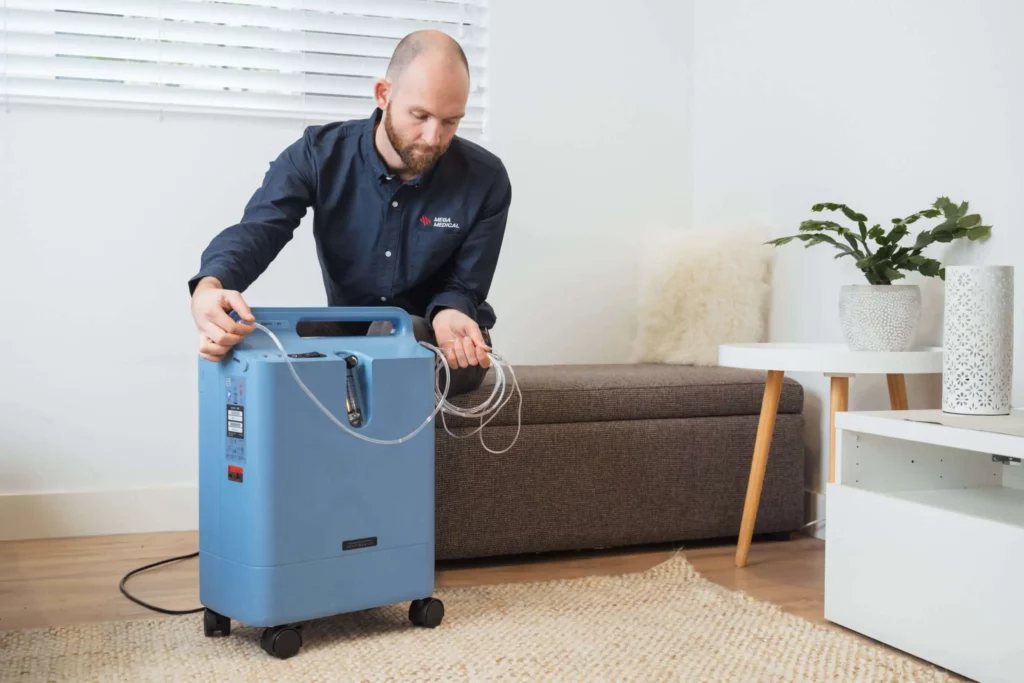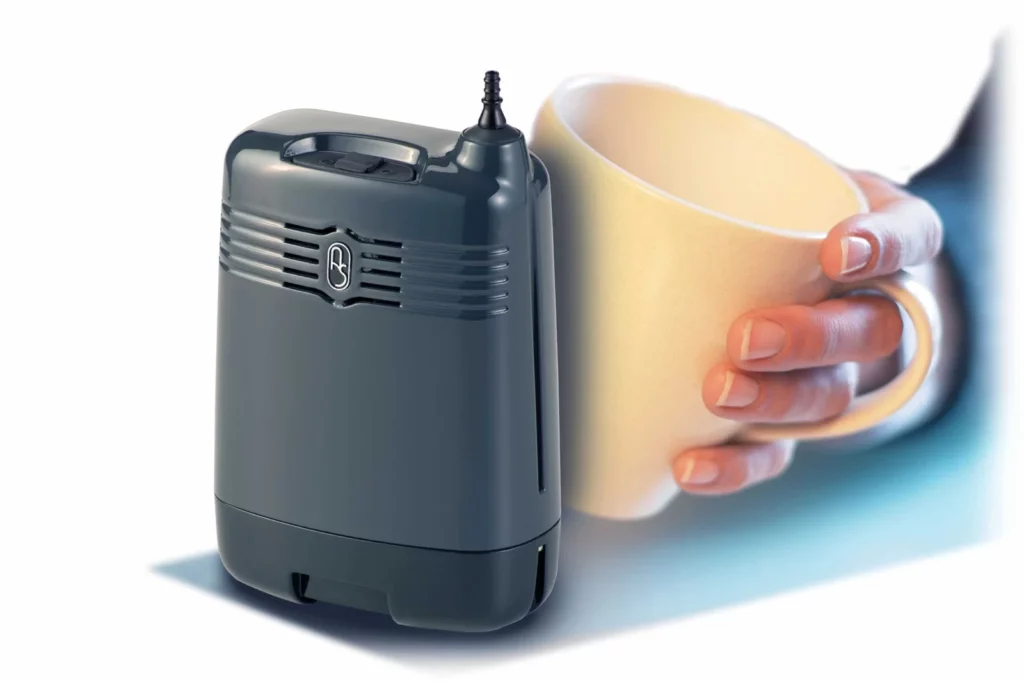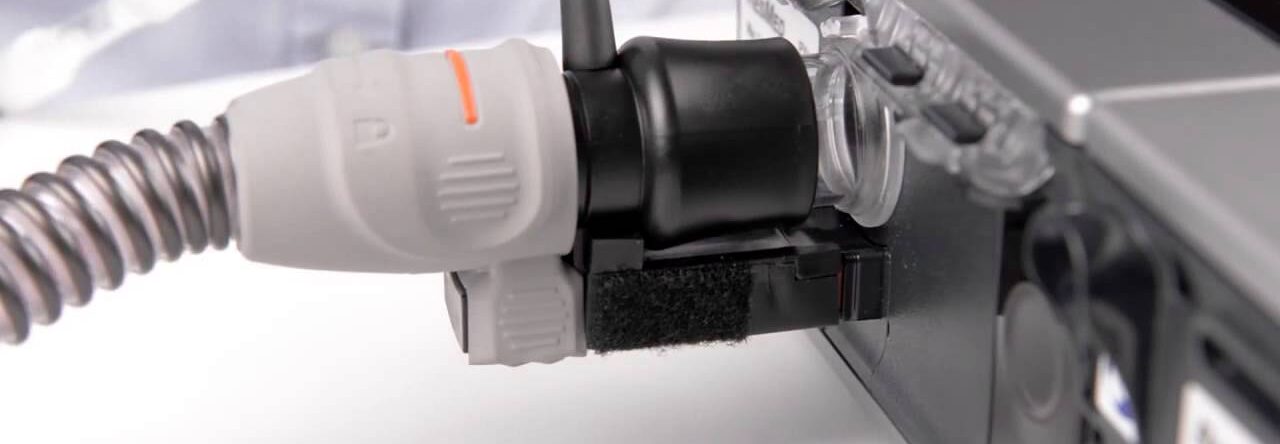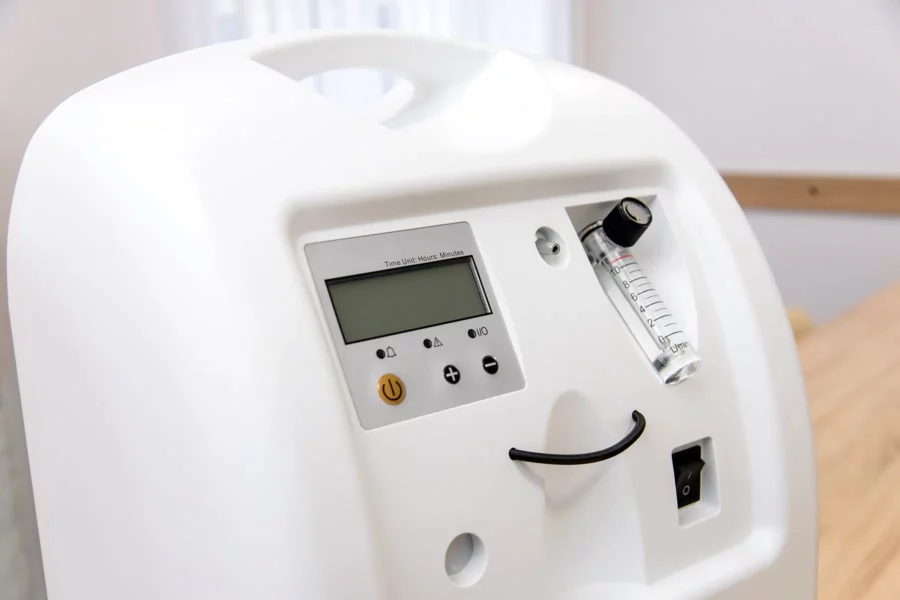What Is an Oxygen Machine for Home and How Does It Work?
An oxygen concentrator is a medical device that extracts oxygen from room air and delivers it in concentrated form to people with breathing difficulties. The machine provides a continuous supply of supplemental oxygen without requiring oxygen tanks or frequent refills.
How Does an Oxygen Concentrator Work?
The device works by drawing in atmospheric air, which naturally contains approximately 20% oxygen and 80% nitrogen. Through a sophisticated filtration system, the oxygen machine for home use compresses this air and passes it through molecular sieves—special filters that trap nitrogen molecules whilst allowing oxygen molecules to flow through into a collection chamber. This process produces oxygen at concentrations typically between 87-95%, significantly higher than normal room air.
How Is Oxygen Delivered?
The concentrated oxygen travels through tubing and reaches the user via:
- Nasal cannula: A lightweight tube with two small prongs that fit into the nostrils
- Oxygen mask: A face covering for higher oxygen flow requirements
Power Sources of Oxygen Concentrators
How oxygen concentrators work depends on their power source. Standard models plug directly into electrical outlets and can operate continuously for as long as needed. Portable versions incorporate rechargeable batteries, offering mobility for several hours depending on the flow rate and battery capacity. These portable units allow users to maintain their oxygen therapy whilst moving around their home or venturing outdoors.
Who Needs an Oxygen Machine for Home?
Home oxygen therapy candidates are individuals whose blood oxygen levels fall below the normal range, typically requiring medical intervention to maintain adequate oxygen saturation. A healthcare provider prescribes supplemental oxygen when the body cannot maintain sufficient oxygen levels on its own.
Several medical conditions needing oxygen concentrator support include:
- Chronic Obstructive Pulmonary Disease (COPD): The most common reason for home oxygen therapy, affecting lung airflow and oxygen absorption
- Pulmonary fibrosis: Scarring of lung tissue that impairs oxygen transfer into the bloodstream
- Heart failure: Weakened heart function reducing oxygen circulation throughout the body
- Severe asthma: Chronic inflammation causing persistent breathing difficulties and oxygen deprivation
- Pulmonary hypertension: High blood pressure in lung arteries limiting oxygen exchange
- Cystic fibrosis: Genetic condition producing thick mucus that blocks airways
- Obesity hypoventilation syndrome: Excess weight combined with other health issues restricting proper breathing
The duration of oxygen therapy varies significantly between patients. Some require short-term oxygen support during recovery from pneumonia, surgery, or acute respiratory illness lasting weeks to months. Others face lifelong oxygen therapy needs due to progressive chronic conditions where lung or heart function continues deteriorating. Doctors regularly assess low blood oxygen levels through testing to adjust therapy duration and oxygen flow rates according to individual patient requirements.
How Is the Need for Home Oxygen Therapy Determined?
Assessing need for oxygen therapy begins with specific medical tests that measure how much oxygen your blood carries. Healthcare providers use pulse oximetry and blood tests for oxygen levels to diagnose hypoxemia (low blood oxygen).
Pulse Oximetry
Pulse oximetry provides a quick, non-invasive reading by clipping a small sensor onto your fingertip or earlobe. This device measures oxygen saturation (SpO2), with normal levels typically ranging between 95-100%. Readings consistently below 88-92% often indicate the need for supplemental oxygen.
Arterial Blood Gas (ABG) Tests
Arterial blood gas (ABG) tests offer more detailed information about oxygen levels in your bloodstream. A healthcare professional draws blood from an artery, usually in your wrist, to measure the partial pressure of oxygen (PaO2). Results showing PaO2 below 55-60 mmHg at rest generally qualify patients for home oxygen therapy.
Exercise Tests
Exercise tests reveal how your oxygen levels respond to physical activity. Your doctor may ask you to walk for six minutes whilst monitoring your oxygen saturation. Some patients maintain normal levels at rest but experience dangerous drops during movement, requiring oxygen therapy during activities or sleep.
Your healthcare provider’s prescription remains essential for obtaining and using home oxygen equipment. They determine the appropriate flow rate (measured in litres per minute), duration of daily use, and whether you need continuous or intermittent therapy. Regular follow-up appointments allow your doctor to adjust your oxygen prescription based on your changing needs and response to treatment.
What Are the Benefits of Using an Oxygen Machine at Home?
Home oxygen therapy delivers concentrated oxygen directly to your bloodstream, ensuring your heart, brain, kidneys, and other vital organs receive the oxygen they need to function properly. When blood oxygen levels drop too low, organs struggle to perform essential tasks, leading to fatigue and potential long-term damage.
The benefits of home oxygen therapy extend beyond basic survival needs. Patients consistently report increased energy levels and stamina, allowing them to complete everyday tasks like cooking, cleaning, and walking without becoming breathless or exhausted. Many users find they can participate in social activities and hobbies they previously had to abandon.
Improved quality of life with oxygen concentrator use manifests in several measurable ways:
- Enhanced sleep quality and reduced nighttime breathing disruptions
- Better mental clarity and concentration during waking hours
- Decreased shortness of breath during physical activity
- Greater independence in managing personal care routines
Regular oxygen supplementation helps prevent serious complications associated with chronic low oxygen saturation. These include reduced risk of heart strain, lower likelihood of developing pulmonary hypertension, and decreased hospital admissions for respiratory emergencies. Patients with COPD who use prescribed oxygen therapy often experience slower disease progression and improved survival rates compared to those who don’t maintain adequate oxygen levels.
What Are the Safety Precautions When Using a Home Oxygen Machine?
Oxygen Concentrator Safety Tips
- Ensure proper ventilation for your device by providing adequate airflow to function correctly and prevent overheating.
- Position the machine at least 15 centimetres away from walls, curtains, and furniture to ensure unrestricted air circulation around intake and exhaust vents.

Home Oxygen Fire Safety
- Keep your concentrator at least 1.5 metres away from open flames, including candles, gas stoves, fireplaces, and space heaters.
- Remember that oxygen accelerates combustion, so even minor sparks can turn into serious fire hazards within seconds.
Portable Oxygen Machines Safety
- Always follow both manufacturer instructions and healthcare provider guidelines precisely when using portable oxygen machines.
- Regularly check the tubing for any cracks or kinks, clean the filters according to schedule, and inspect connections for a secure fit.
- If you notice any worn components, replace them immediately instead of attempting repairs.
Smoke Detectors and Fire Extinguishers
- Install smoke detectors in rooms where you use oxygen equipment.
- Keep a fire extinguisher easily accessible in case of emergencies.
- Inform your local fire department about your use of oxygen at home so they can respond appropriately if needed.
Backup Oxygen Cylinder Storage
- Store backup oxygen cylinders upright in well-ventilated areas to prevent any potential hazards.
- Secure the cylinders to prevent them from tipping over or falling.
Avoid Petroleum-Based Products
- Do not use petroleum-based products like Vaseline near oxygen equipment as they can create fire risks.
- Instead, opt for water-based alternatives that are safe to use around oxygen.
How Do Patients Use a Home Oxygen Machine Daily?
Daily use of home oxygen concentrator involves connecting the device to a power source, attaching the nasal cannula or mask, and adjusting the flow rate as prescribed by your doctor. The nasal cannula—a lightweight tube with two small prongs that fit into your nostrils—is the most common delivery method for continuous oxygen therapy at home.
Setting Up Your Equipment
Setting up your equipment requires placing the concentrator on a flat, stable surface with adequate ventilation space around all sides. You’ll connect the oxygen tubing to the outlet port on the machine, then position the nasal prongs comfortably in your nostrils or secure the mask over your nose and mouth. Most devices feature simple controls for power and flow rate adjustment.
Duration and Frequency of Oxygen Use
Duration and frequency of oxygen use varies significantly based on your condition severity and medical recommendations. Some patients require oxygen only during sleep or physical activity, whilst others need continuous 24-hour therapy. Your healthcare provider will specify:
- Hours per day you should use oxygen
- Prescribed flow rate (measured in litres per minute)
- Whether you need oxygen during specific activities like exercise or sleep
Portable Oxygen Machine Handling
Portable oxygen machine handling demands attention to battery management for maintaining independence outside the home. Portable concentrators typically run for 2-8 hours depending on flow settings and battery capacity. Nasal cannula usage with portable units follows the same principles as stationary models, though you’ll need to plan activities around battery life and carry spare batteries for extended outings. Check out more about Where Can I Buy or Rent a Portable Oxygen Concentrator Machine?
Why Is a Home Oxygen Machine Important for Certain Patients?
The importance of home oxygen therapy lies in its ability to sustain life and restore independence for people with compromised respiratory function. Consistent respiratory support at home ensures vital organs receive adequate oxygen, preventing serious complications like organ damage, cognitive decline, and heart strain.

Patients experience tangible improvements in their daily lives:
- Enhanced energy levels for completing household tasks and personal care
- Better sleep quality through maintained oxygen saturation during rest
- Reduced hospital admissions by preventing oxygen-related emergencies
- Increased mobility with portable concentrators enabling social activities
The device transforms what would be a severely restricted existence into manageable living. Patients can prepare meals, engage with family, and maintain hobbies—activities that would be impossible without supplemental oxygen. This independence directly impacts mental health, reducing anxiety and depression associated with chronic illness whilst supporting physical recovery and stability.
Frequently Asked Questions (FAQs) About Oxygen Machines for Home Use
An oxygen machine for home, also known as an oxygen concentrator, is a medical device that extracts oxygen from surrounding air and delivers it in a concentrated form to individuals with breathing difficulties. It provides a continuous flow of supplemental oxygen without requiring bulky tanks or frequent refills.
2. How does a home oxygen concentrator work?
The machine draws in room air containing around 20% oxygen and 80% nitrogen. Using molecular sieve filters, it removes nitrogen and compresses the remaining oxygen to deliver air with 87–95% purity. This concentrated oxygen is then supplied to the patient through a nasal cannula or oxygen mask.
3. Who needs an oxygen machine for home use?
Home oxygen therapy is prescribed for patients with low blood oxygen levels caused by conditions such as COPD, pulmonary fibrosis, heart failure, severe asthma, pulmonary hypertension, cystic fibrosis, or obesity hypoventilation syndrome. It’s also used temporarily for recovery after pneumonia, surgery, or COVID-19.
4. How do doctors determine if you need home oxygen therapy?
Doctors use pulse oximetry and arterial blood gas (ABG) tests to measure oxygen levels. A pulse oximeter reading below 88–92% SpO₂ or ABG results showing PaO₂ below 55–60 mmHg typically indicate the need for supplemental oxygen. Exercise tests may also assess oxygen levels during physical activity.
5. What are the main benefits of using an oxygen concentrator at home?
Home oxygen therapy improves energy levels, sleep quality, mental alertness, and overall well-being. It reduces shortness of breath, enhances physical endurance, and helps prevent complications such as heart strain and pulmonary hypertension. Consistent use can also decrease hospital visits and improve quality of life for patients with chronic conditions.
6. Are home oxygen concentrators safe to use?
Yes, when used properly. However, oxygen supports combustion, so it’s crucial to keep the device at least 1.5 metres away from open flames and avoid using petroleum-based products nearby. Ensure good ventilation, check tubing regularly, and install smoke detectors and a fire extinguisher in the room.
7. How do you use an oxygen machine at home?
Place the concentrator on a stable, well-ventilated surface, connect the tubing to the outlet, and wear the nasal cannula or mask. Adjust the flow rate as prescribed by your doctor. Some patients use oxygen only during sleep or exercise, while others need it continuously throughout the day.
8. What is the difference between stationary and portable oxygen machines?
Stationary oxygen concentrators are designed for continuous indoor use and plug into electrical outlets. Portable oxygen concentrators (POCs) are lightweight, battery-powered units ideal for outdoor activities and travel. Both provide the same oxygen therapy, but portable units offer greater freedom and mobility.
9. Why is home oxygen therapy important for respiratory patients?
Home oxygen machines play a vital role in maintaining adequate oxygen levels, preventing organ damage, and improving longevity for people with chronic respiratory illnesses. They restore independence, allowing patients to live comfortably, stay active, and engage in daily life with less fatigue and breathlessness.


